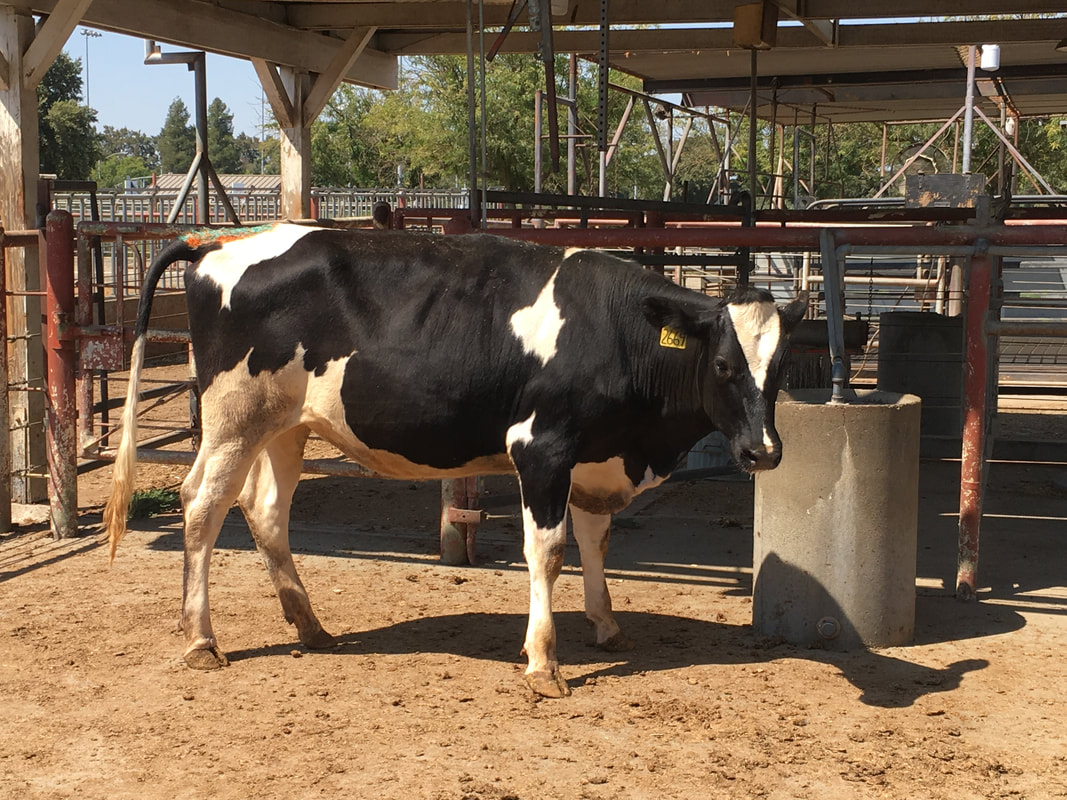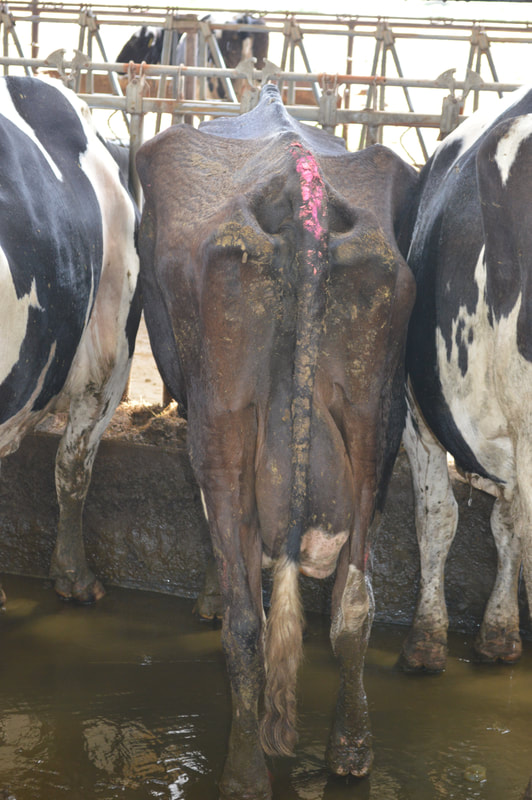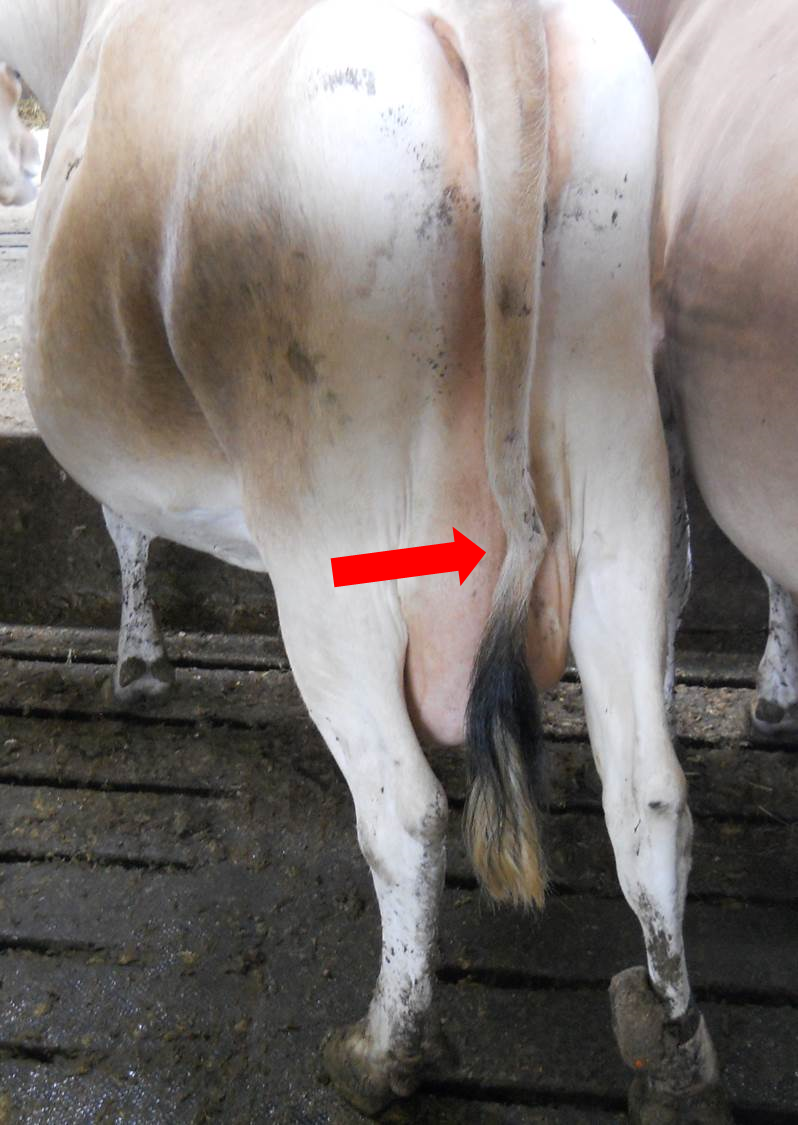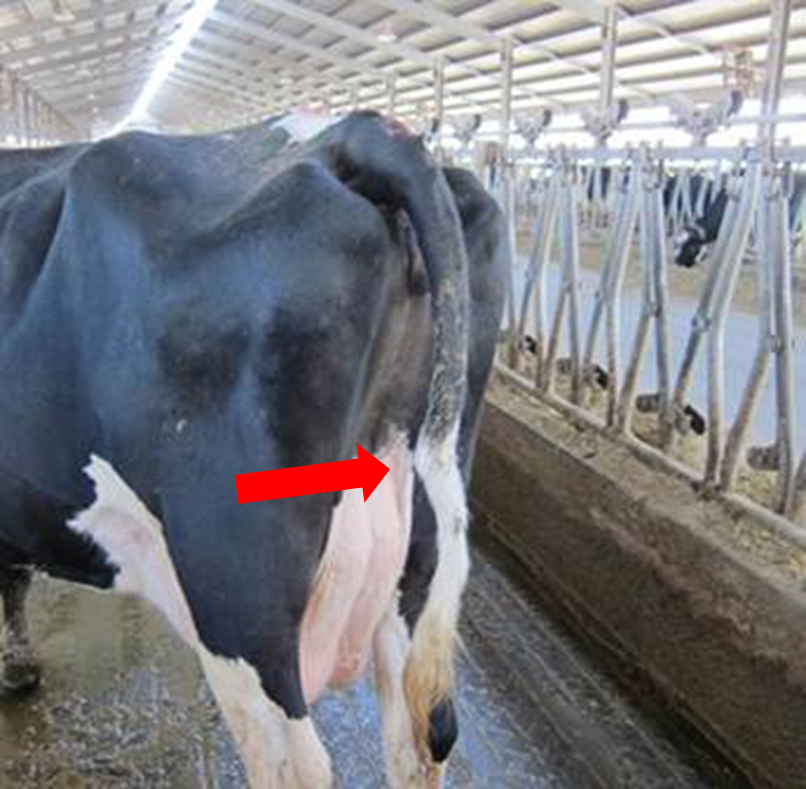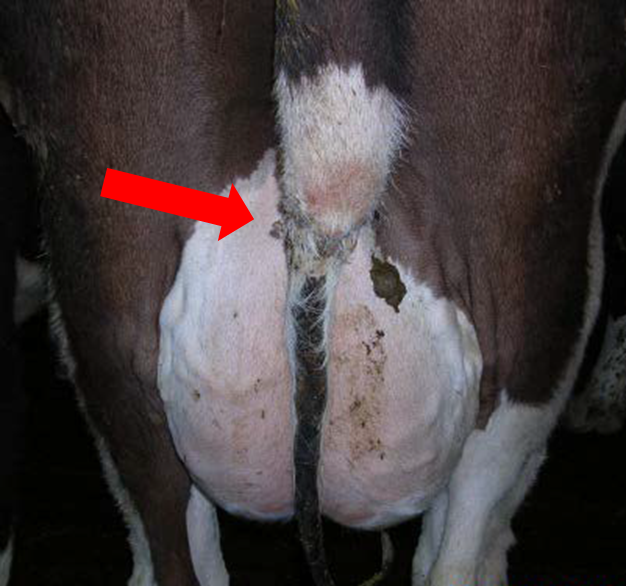Broken Tail
Broken tails can result from improper handling. Breaks often are present near the base of the tail due to extreme force when applying a tail twist or jack for restraint. They can also appear mid-length or at the tip of the tail due to bending the tail over other structures in an attempt to restrain the cow.
This instructional video by the University of Saskatchewan demonstrates the proper way to apply a tail twist.
Which cows to assess:
- Lactating cows
- Heifers
- Hospital cows
If this is a follow-up evaluation and broken tails were previously found, look for evidence of new or recently broken tails in the first lactation heifer pen.
The number to assess in each group is determined by the sample size calculator.
How to assess:
- Count and record the % of animals with broken tails as evidenced by:
- Tail appears abnormally shaped or asymmetrical
- Vertebrae may be misaligned
- Swelling, abrasions, crusted blood around the broken vertebrae, or a necrosed tail tip (in recently broken tails)






